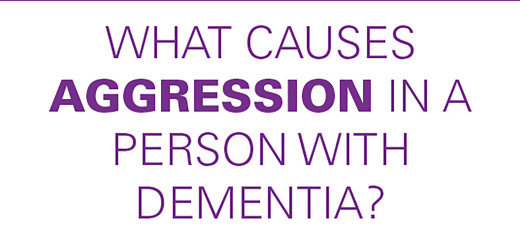Abandoned and dismissed: Daughter struggles to navigate the dementia care system
Data appearing in the Alzheimer’s Association 2024 Alzheimer’s Disease Facts and Figures report highlights the need for trained professionals to help dementia caregivers navigate the healthcare system after their loved one receives a dementia diagnosis. Latrice shares the story of how it took five years for her mother to receive a dementia diagnosis. The doctors repeatedly dismissed Latrice’s concerns and, when her mother finally received a diagnosis, Latrice and her mother were essentially shown the door without resources or next steps. Like many caregivers, Latrice left the hospital feeling abandoned, lost and alone.
A survivor
Janis, a Black woman, was born in rural Texas in the 1950s at a time when segregation was still rampant. Growing up, Janis’s father wasn’t around and she was raised primarily by her mother. Sadly, her mother died when Janis was only 11.
Eventually Janis married and had two children of her own. However, the marriage didn’t last and after the divorce, Janice and her two children move to California. Ever the survivor, Janis met another man and had two more children. Janis was a tough but loving mother who always protected her children.
When Janis was older, she joined a gospel group where she loved to sing and perform. As the matriarch of the family, she enjoyed hosting holiday gatherings as long as she could. Currently, Janis has five grandchildren with a greatgrandchild on the way.
Relinquishing control
Latrice, Janis’s third child, had noticed that her mom was losing weight, forgetting things and small dents were appearing on the car. However, it wasn’t until 2014 when Janis passed out at a gospel photoshoot, that things began to snap into place. Janis was taken to the hospital where doctors found that her blood pressure was dangerously high, something she had medication for. It turns out she had been forgetting to take her blood pressure medication.
Janis, typically an independent woman, asked Latrice for help with shopping and then with banking. Latrice said, “For my mom to relinquish control of the banking – that’s a huge deal.” Finally, Janis asked Latrice to come to her doctor appointments with her. “I saw that she was on what I refer to as ‘the dementia cocktail’ of [Donepezil] and Memantine,” said Latrice. “Mom had told them she was having trouble with her memory and they started prescribing [the medication] but never tested her for anything.”
Finding a neurologist
Understandably, Latrice was confused about her mother’s care plan and asked what the next steps were. They referred Janis to a neurologist and so began the long road to a dementia diagnosis.
According to the Alzheimer’s Association 2024 Alzheimer’s Disease Facts and Figures report, 6.9 million Americans over the age of 65 are living with Alzheimer’s. This makes up nearly 11% of the over 65 population. Additionally, older Black Americans are twice as likely as older Whites to have Alzheimer’s or another dementia. With 21.3% of Black Americans over the age of 70 living with Alzheimer’s.
In the state of California, there are nearly 720,000 people over the age of 65 living with Alzheimer’s. However, there are only 587 neurologists in the state. For Nevada’s 54,900 people over the age of 65 living with Alzheimer’s, there are only 43 neurologists in the state. Nevada is considered one of 20 states that are a “neurology desert,” meaning they are projected to have fewer than 10 neurologists per 10,000 people with dementia in 2025. This leaves many citizens either without access to a neurologist or forcing them to cross state lines to utilize other states’ limited resources.
While neurologists are more abundant in California, Latrice and her mother still had a hard time finding one that would see them. “At the time [her insurance gave] you a referral and you had to go out and find these doctors that would take you,” said Latrice. “Finding an available neurologist in Contra Costa County was difficult. The ones that were here were starting to end their practice. The last one she saw retired, and a new one took over and still wasn’t interested [in taking on my mother as a client].”
When Janis was finally seen by a neurologist, they agreed that “something” was there but didn’t feel comfortable giving her a formal diagnosis. Unfortunately, this isn’t an uncommon practice amongst some doctors and is a term Latrice refers to as “medical gaslighting.” “I came to think they were 80 years old themselves,” speculated Latrice. “They didn’t want to admit it was problem just because she couldn’t remember her children.”
Five years to diagnose
For the next five years Latrice took her mother to several different doctors insisting something was wrong. Each doctor would assure her it was just Janis’s high blood pressure causing all of her symptoms. “High blood pressure doesn’t cause you to not know what day it is,” said Latrice. “The entire thing was dismissive as though this just happens [and because she is a] woman she just forgets things [and women are] not useful anyway. You usually don’t forget how many children have come out of your body.”
One day, Janis ended up back in the hospital and it was there that Latrice finally got the answer she was looking for. “A young dismissive doctor was like, ‘Duh, she has vascular dementia,’” said Latrice. “I almost punched him. I had to step out of the room. It had been a long five years at this point.”
Latrice felt that once her mother received a vascular dementia diagnosis, suddenly all of her mother’s doctors were coming forward saying that Janis did indeed have dementia. “[Doctors] would say they saw it in her reports, but no one told us,” said Latrice. “It would have been helpful to know that in order to figure out care planning.”
Abandoned
With this newfound diagnosis in hand, Latrice had thought she would find some relief and help from her doctors on what to do next. Instead, they wished her luck and showed her the door. “I was hoping that it would open doors,” said Latrice. “I felt like I should be able to tell the Government, or the hospital and they should be able to tell me what to do. No, that didn’t happen, they sent her home with me. I asked, ‘You’re just going to send her home? What am I supposed to do?’ [The doctors said,] ‘Take care of her.’”
According to the Facts and Figures report 70% of caregivers, like Latrice, report that coordinating care is stressful. More than half of these caregivers said navigating health care is difficult and another 66% have difficulty finding resources and support for their needs. More than 1 in 3 caregivers report coordinating care with multiple doctors, securing appointments and getting help taking a break as leading stressors in navigating care for their recipient.
Nearly 1 in 3 dementia caregivers say it would be helpful to have assistance with insurance or public benefits (32%), scheduling appointments (31%), caregiver training (31%), managing behavioral symptoms (31%), understanding the health care system (30%) and finding services to help with respite care (30%). Eighty-five percent of dementia caregivers say having access to a care navigator would influence their choice of dementia health care provider for the person they care for.
Additionally, dementia caregivers say that less stress (62%) and more peace of mind (62%) would be valuable outcomes of having a care navigator. More than half (56%) say having a care navigator could help them be better caregivers.
For those who have had the benefit of a dementia care navigator 61% cite improvement in the quality of life for their care recipient and 43% believe access to a care navigator would improve the overall health of their care recipient.
“A care navigator would have been helpful,” said Latrice. “Someone to kind of hold your hand that you can bounce back to [for questions and suggestions]. Now I have to figure out how to search for what I need and distinguish the answers. If you’re doing other stuff, it can take a lot of time and brain power. [I wish] someone had been there to tell you [see] this list, this list that will help you.”
Dental care
Unfortunately for Janis, in addition to dementia, she also needed two teeth pulled along with a bone graft. For someone who isn’t living with dementia, that is a time-consuming process that requires hours awake in a chair with a dentist. However, for Janis and others living with the disease, sitting for that long isn’t an option. “She needs to be asleep,” said Latrice. “She isn’t going to understand. We tried to go to the dentist and she just gets out of the chair.”
Sadly, the insurance provider Janis has will not cover anesthesia, especially with her blood pressure issues. Latrice also found that the dentist didn’t know how to handle a person living with the disease and was surprised that they had never encountered one before. Because of all of this, Janis is unable to have her teeth removed, which causes other health issues and increases her visits to the emergency room.
When Janis does go to the emergency room the doctors find out that it’s a dental issue and instantly dismiss her. “Her gums swell up and she gets a fever and seems sick,” said Latrice. “[I took her to the emergency room where] we waited for hours. When a doctor finally came, he was so dismissive I cried. He was disrespectful. He looked in her mouth and was like, ‘Oh she’s fine,’ and again sent her home with nothing. It felt like the doctor looked at my mom and didn’t see a person that mattered to him. Not his mother or grandmother, not a person he cares about, just a throw away person.”
“Too rich” for services
Latrice and Janis live in Contra Costa County located in California’s Bay Area. According to the U.S. Department of Housing and Urban Development, extremely low income for a family of two (Janis and her husband) is $35,500 a year. Because of her pension and social security, Janis on her own makes $30,000 combined with her husband’s income disqualifies them from any services the County offers. Because of this, Latrice, her husband and stepfather have to pay out of pocket to have someone come and help with Janis’s care.
“My mom gets a small pension and social security,” said Latrice. “In this county she doesn’t qualify for respite care. We pay out of pocket a couple of days a week for a caregiver to come two days a week. That is eight days a month for five hours and it’s $2,000 a month. The rest of the care, which is a lot, is on me, my husband and stepfather. I’m blessed I can do my work from home.”
The Facts and Figures report states that 42% of caregivers cite cost as a stressor in getting care for their recipient. In 2024, the total cost for caring for people with Alzheimer’s and other dementias in the United States is projected to reach $360 (a $15 billion increase from a year ago). Without new treatments and advancements in care, the total cost for caring for people living with Alzheimer’s and other dementias is projected to reach nearly $1 trillion in 2050.
Ask for help
Latrice encourages other caregivers to ask for help, especially in situations like Janis where there wasn’t someone to help navigate the care system. Latrice wishes she had asked for help sooner. “In the Black community, you don’t run around telling a bunch of people your problem,” said Latrice. “We need to come out of that. [Caregiving] is a lot of work and there might be a lot of running around and it’s frustrating. It seems so obvious, but it felt like a thing I couldn’t do at first.
Some people aren’t coming from best previous relationships. Look at that person, help them with what they need to navigate. The sooner we get in communities the sooner it allows support.”
For more information on our 2024 Facts and Figures report please visit alz.org/facts. If you live in California, we invite you to attend our upcoming webinar, Your Public Health Benefits: SSI, Medi-Cal, CalFresh and More on April 10, 2024 at 10 a.m.





















